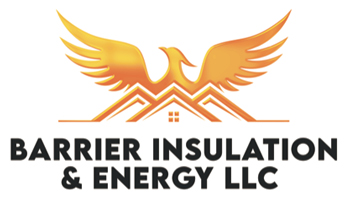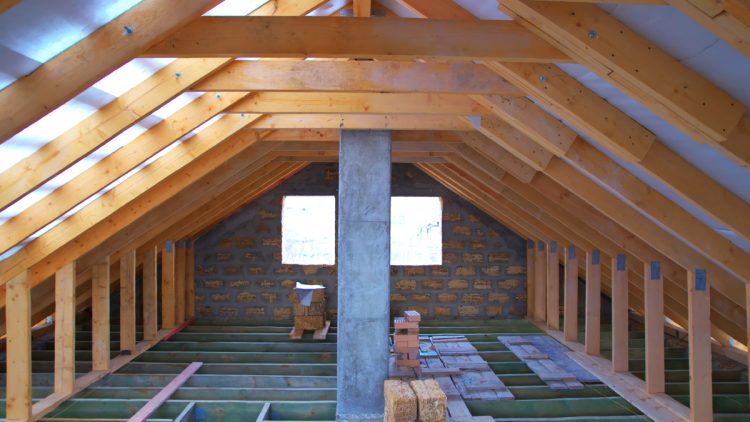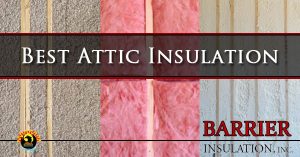Signs Of Poor Attic Ventilation
Poor Attic Ventilation Signs
Sign 1. Mold Or Mildew
Inside poorly ventilated attics, it’s no secret that condensation can accumulate on trusses and undersides of the roofing. The water will drip down onto the flooring or joists, causing mold, mildew or even rot to develop over time.
Sign 2. Extreme Heat In Attic
Because attics are not climate-controlled, they will get warmer than the rest of the home, especially during the summer. Properly ventilated attics should have the temperature mimicking the outdoor temperature. Poorly ventilated attics trap heating, warming up to a high of 150 degrees Fahrenheit. This extreme heat can be very tough on roofing materials.
Sign 3. Roofing Material Deterioration
Poorly ventilated attics can cause early degradation of your roof quite easily. When moisture accumulates in the attic and flashing, the end result will be damaging leaks. Mildew and mold can grow due to excessive moisture, as well. If you notice that the shingles are loose or falling off, this may be a sign of poor attic ventilation. Call a roofing inspector if you see any of these issues.
Sign 4. Ice Dams
Best Types Of Attic Insulation
Which insulation you choose will be based largely on a few key factors. Your budget for installing insulation is one of these key factors. Another consideration is how long you intend on staying in the home. If you plan this house as your last move, then the added cost of installing premium insulation will pay you back for years to come.
If you are planning on moving soon you may still consider spray foam insulation as it will increase the overall value of the home. Ultimately the question of which will be best for you, your home, and your budget is a conversation for you and your professional insulation contractor.
Batt Insulation
Batt insulation is commonly referred to as “batts” or “rolls”. This type utilizes a flexible blanket-like insulation that is best suited for easily accessible areas. Batts and rolls can be used in non-standard areas, so the material will have to be cut to size.
The blankets come in high, medium and standard-density constructions, made from fiberglass, rock wool and other similar materials. Batt insulation can be fitted quite easily to the specific areas, but it may be hard to fit in unusual or hard-to-access areas.
Blown-In Insulation
Blown in insulation is constructed of either fiberglass or cellulose that is blown into cavities in walls. This material is used to fill gaps in the insulation. Blown in insulation is ideal for attic spaces filled with nooks and crannies that are difficult to navigate through.
Cellulose blown in insulation is the most affordable option for home and business owners because it is made of recycled materials. Once it is installed, this insulation can last up to 25 years with very reliable performance overall.
Cellulose Insulation
Fiberglass and cellulose insulation are the two cheapest insulation types you can install in your home. While fiberglass is much more common cellulose is still the second most popular insulation material in the country.
For customers who can’t afford the higher performance spray foam insulation these types of insulation offer the layer of insulated comfort homes need.
Fiberglass Insulation
Fiberglass insulation has been installed in homes for many decades. It is comprised of extremely fine glass fibers which reinforce a pillow like plastic.
The fine glass is added to increase the overall strength of the insulation and help it resist sagging. It usually comes in one of 3 types, loose fill, rolls, or batts.
Spray Foam Insulation
Spray foam insulation is sprayed on wet and it expands rapidly into gaps, cracks, and solidifies as a hard, thick foam. This insulation type can be used to insulate the walls of new build and existing homes. One of the best features of spray foam insulation is how well it conforms automatically to all of the odd shaped cavities and air leaks.
The R-value of spray foam depends on the chemical makeup as there are two variants, closed and open cell spray foam insulation. Spray foam insulation does require a slightly greater investment, but it does offer superior performance.
Schedule Your Insulation Services Today!
Whether you are building a new house, or just need to remove the old insulation and install a newer more energy efficient option Barrier Insulation is Phoenix’s first choice in home and commercial insulation and solar services. We proudly provide the valley’s more comprehensive insulation service that helps you stay more comfortable and save on energy. Click here to schedule on our website, or just give us a call at 602-499-2922.


